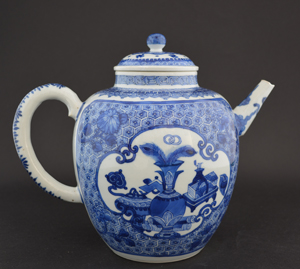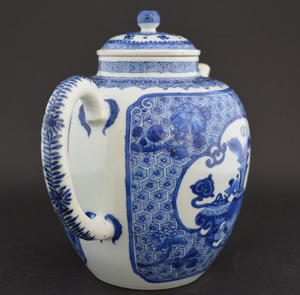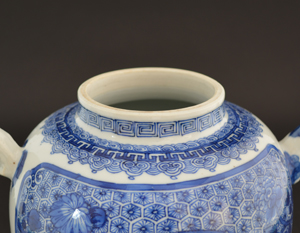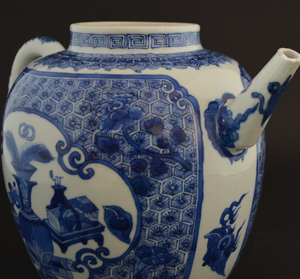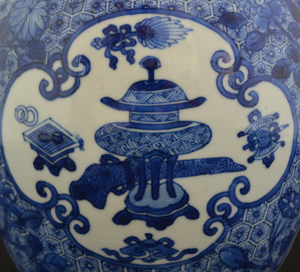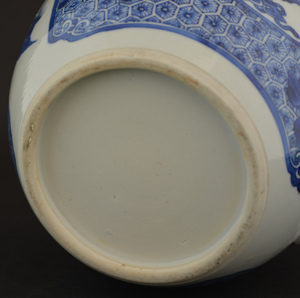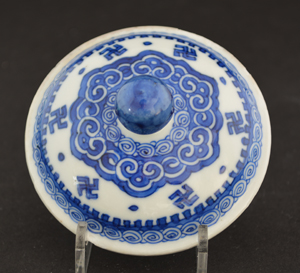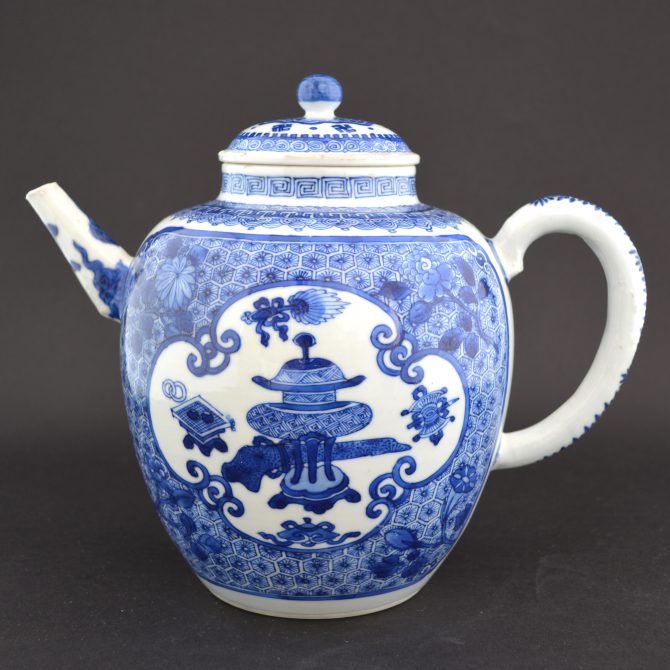
KANGXI 1662 – 1722 Chinese Porcelain
A Very Large Kangxi Blue and White Porcelain Punch Pot or Wine Ewer and Cover c.1690-1720. Decorated in Vibrant Tones of Cobalt Blue and White with Square Panels of Diaper Ground with Flowers in the Corners, the Central Cartouches with the `100 Antiques` Design. The Objects Include a Large Tripod Censer on a Stand, a Weiqi Board and a Guqin Wrapped in Cloth.
SOLD
- Condition
- In good condition, the end of the spout has several shallow chips and some fritting. The rim of the cover has some fritting.
- Size
- Width : 26.8 cm (9 inches) Height : 21.3 cm (8 1/2 inches)
- Provenance
- N/A
- Stock number
- 24305
- References
- For a Kangxi Blue and White Porcelain vessel of this form and design catalogued as a punch pot see : Fine Chinese Export Porcelain, Sotheby`s London November 18th 1980, lot 17.
Information
Weiqi / Go :
Known in Chinese as Weiqi and Go in Japan it has similarities to chess. The game is played by two players who alternately place black and white stones on the vacant intersections of a grid of 19×19 lines. The object of the game is to control (surround) a larger portion of the board than the opponent, it is rich in strategy despite its simple rules. Weiqi originated in ancient China more than 2,500 years ago, and although it is not known exactly when the game was invented, by the 3rd century BC it was already a popular pastime, as indicated by a reference to the game in the Analects of Confucius. Go reached the West through Japan, which is why it is commonly known by its Japanese name.
Qin, Guqin :
Guqin is the modern name for a plucked seven-string Chinese musical instrument of the zither family, which used to be referred to as a Qin. It has been played since ancient times, and has traditionally been favoured by scholars and literati as an instrument of great subtlety and refinement, as highlighted by the quote "a gentleman does not part with his qin or se without good reason," as well as being associated with the ancient Chinese philosopher Confucius. It is sometimes referred to by the Chinese as "the father of Chinese music" or "the instrument of the sages".
Traditionally the instrument was called simply qin but by the twentieth century the term had come to be applied to many other musical instruments as well: the yangqin hammered dulcimer, the huqin family of bowed string instruments, and the Western piano are examples of this usage. The prefix "gu-" (meaning "ancient") was later added for clarification. It can also be called qixianqin (lit. "seven-stringed instrument"). The guqin is not to be confused with the guzheng, another Chinese long zither also without frets, but with moveable bridges under each string. Because Robert Hans van Gulik`s famous book about the qin is called The Lore of the Chinese Lute, the guqin is sometimes inaccurately called a lute.

